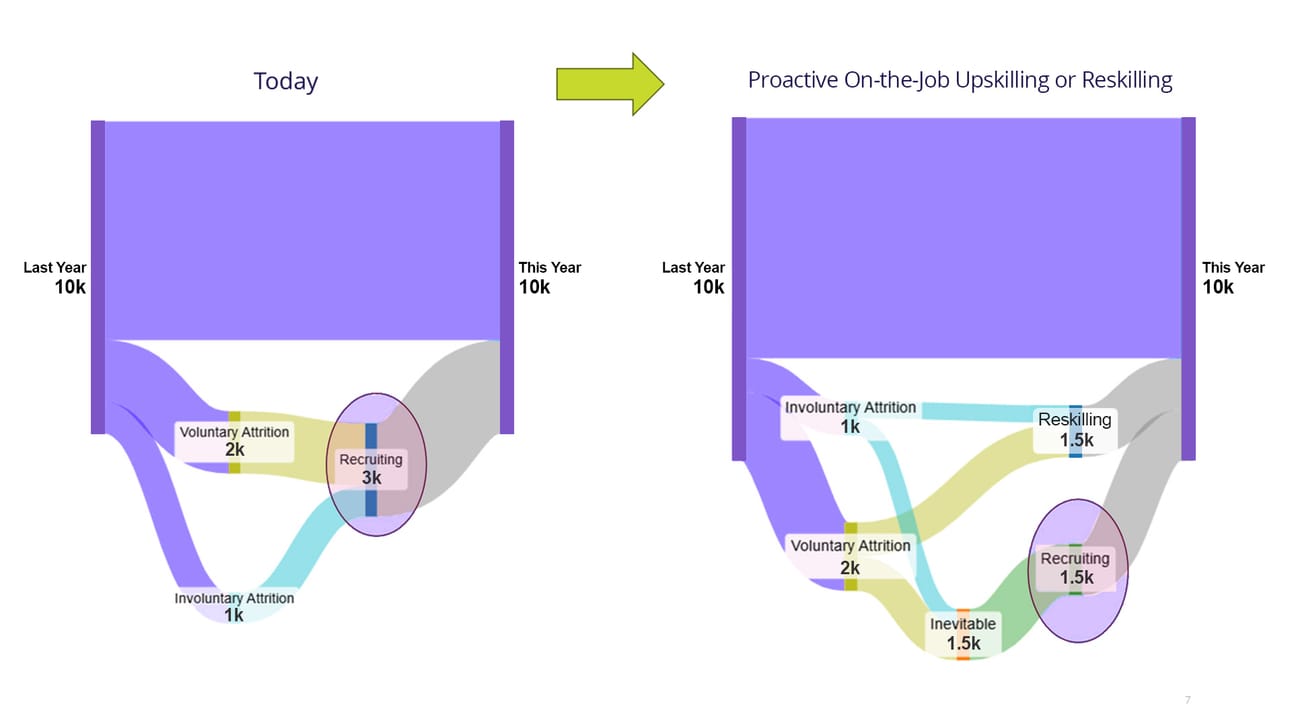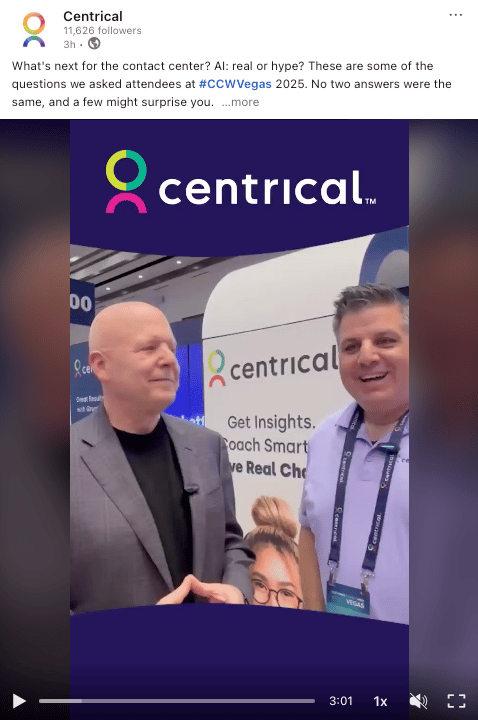In this month’s newsletter, I discuss how AI is rapidly reshaping workforce management, and what leaders should do to prepare their frontline teams for the next era. Before we dive in…
This month, I attended CCW Vegas, where Centrical was named Workforce Innovation of the Year at the CCW Excellence Awards. Winning this prestigious award is a testament to the impact our platform is having on contact centers and frontline teams around the world, and I couldn't be prouder of our phenomenal team.
At CCW, we also asked a few rapid-fire questions: What's next for the contact center? AI: real or hype? No two answers were the same, and a few might surprise you:
Preparing the Frontline for the Next Era
We’ve known this for some time: the ground beneath the workforce is shifting fast, and legacy workforce management strategies are falling behind in a world AI is rapidly reshaping.
At the heart of this transformation are three powerful waves, each reshaping how we think about people, performance, and potential:
The rise of the AI-human hybrid workforce
Growing complexity in frontline roles
The workforce readiness gap
To stay ahead, we need to rethink not just what work gets done, but how, by whom, and how fast we can adapt.
Let's take a closer look at each of these waves and explore how they are reshaping the future of work.
1. The Rise of the AI-Human Hybrid Workforce
A new class of workers—autonomous AI agents—has entered the chat.
Agentic AI is rapidly becoming embedded across all processes and functions, shaping a future in which humans and AI will work together to achieve shared goals. This new reality comes with several new challenges:
Work orchestration complexity increases: Leaders must orchestrate workflows that assign tasks intelligently between AI and human workers, based on context, complexity, and desired outcomes.
Redefined roles and responsibilities — and new ways of measuring performance, as we’ll see in the next section.
New managerial skills: Managers will need to supervise and coach both human and digital labor, and use new tools to surface performance gaps, suggest interventions, and align teams. Tuning digital labor requires different skills from coaching human labor.
Understanding the human advantage: One of the most strategic and consequential questions leaders now face is where AI adds value by augmenting human work, and where human experience, empathy, and judgment are most effective.
2. No Longer Just a Job: Frontline Employees as Talent
We know it: all roles, including frontline roles, are rapidly evolving. As AI automates more processes and handles simpler customer requests, employees are expected to solve more complex or nuanced issues and deliver human experiences that AI can’t replicate.
The ongoing shift is redefining what it means to be a frontline worker: not a script-follower, but a trusted expert who combines emotional intelligence, deep knowledge of products, processes, and policies, and real-time judgment.
As expectations change, organizations must actively invest in helping their employees upskill and reskill to meet these new demands. This shift requires a new kind of mindset: beyond hiring for hard skills, you’re looking for critical thinkers and empathetic communicators who can work in tandem with AI.
We’re seeing these changes take place in various industries already.
In financial services, reps are now expected to become trusted advisors to their clients, helping them with end-of-life planning beyond just savings and retirement plans.
In telco, complexity is rising. Reps can’t just know the script; they need to understand the product, the customer, the tech, the context—everything.
How can leaders support their employees as they transition into more complex roles?
➡️ Equip agents with the tools they need to handle complexity.
➡️ Deliver on-the-job upskilling and reskilling through microlearning and coaching.
➡️ Motivate growth through gamified experiences and performance-based incentives.
3. The Workforce Readiness Gap
As AI accelerates job disruption, most organizations lack the infrastructure to reskill and redeploy talent fast enough. Traditional career pathing has become obsolete, and we need a more agile model of on-the-job upskilling, reskilling, and internal mobility.
The workforce readiness gap is a growing disconnect between the capabilities organizations need and what their teams are currently equipped to deliver.
We can’t “hire” our way out of the skills gap: we need to build skills from within our organizations. To close the gap, we need to provide our employees with opportunities to grow continuously, both on the job and through ongoing training.
I’ve written about it in this article about on-the-job upskilling. I use this Sankey diagram to illustrate how upskilling and reskilling can help retain your current frontline workforce.

“By prioritizing on-the-job upskilling and reskilling, leaders can retain a portion of employees who might have otherwise left or been let go of, transforming potential attrition into opportunities for growth and internal mobility.
Replacing frontline employees can be very costly. By taking a closer look at your workforce data, you can easily quantify the financial impact of turnover and, more importantly, how much money you can save by prioritizing talent retention.”
AI can greatly help with the following:
→ Identify individual skills gaps and deliver targeted knowledge refreshers.
→ Build personalized, data-driven learning experiences at scale.
→ Generate bite-sized, microlearning content.
→ Gamify learning to boost engagement and retention.
→ Deliver personalized performance nudges.
Embracing AI-powered, on-the-job upskilling and reskilling is essential if you want to build a resilient, future-ready workforce.
In Conclusion: Turning Disruption Into Advantage
Each of these 3 waves—hybrid labor, role complexity, and readiness—brings real challenges. But within that disruption lies a key opportunity: the chance to build a more aligned, empowered, and future-ready workforce.
Disruption doesn’t have to derail progress. When embraced strategically, today’s workforce shifts can be a catalyst for elevating people, reimagining performance, and unlocking untapped potential on the front lines.
Did you find this article helpful? Share The Future of Work newsletter with a colleague!
